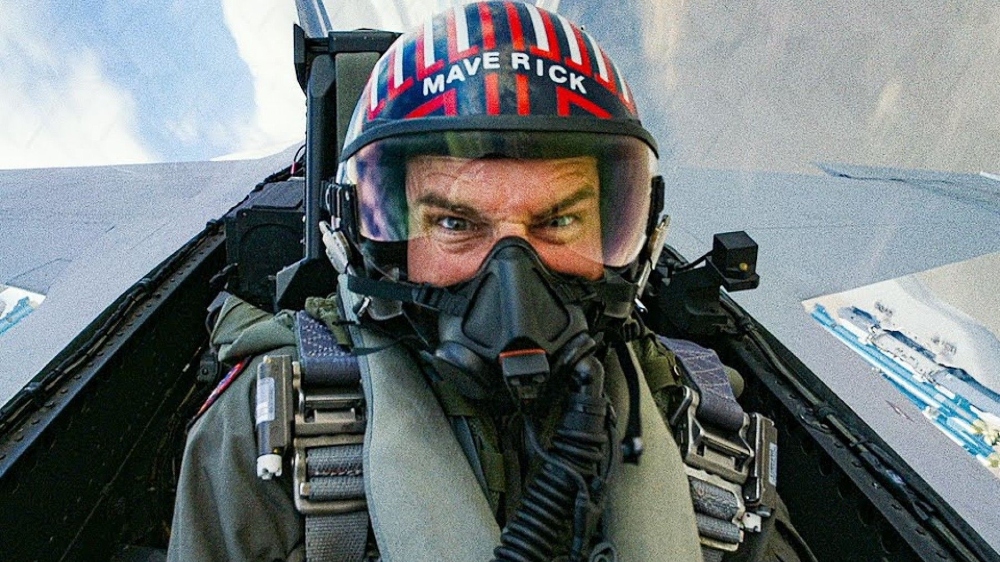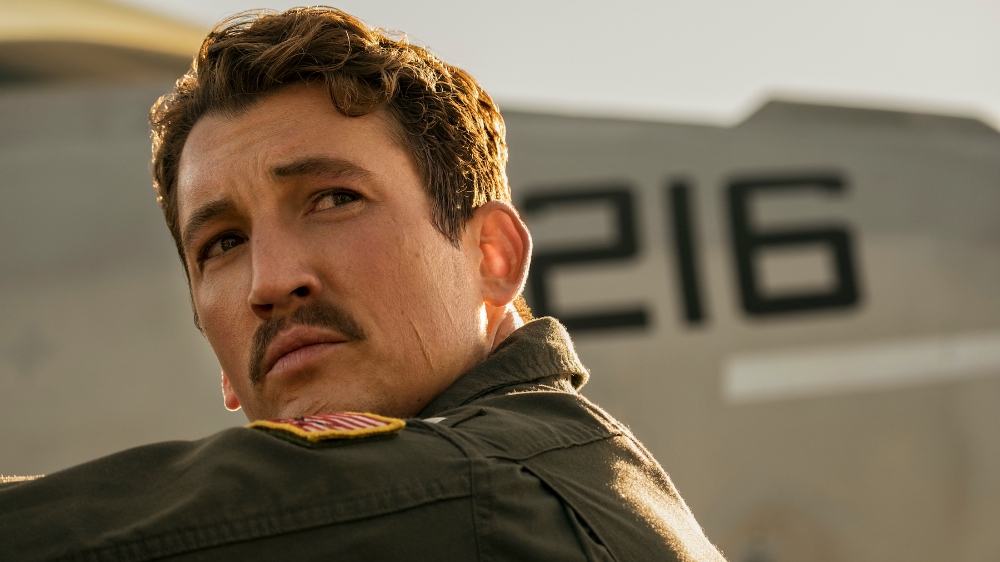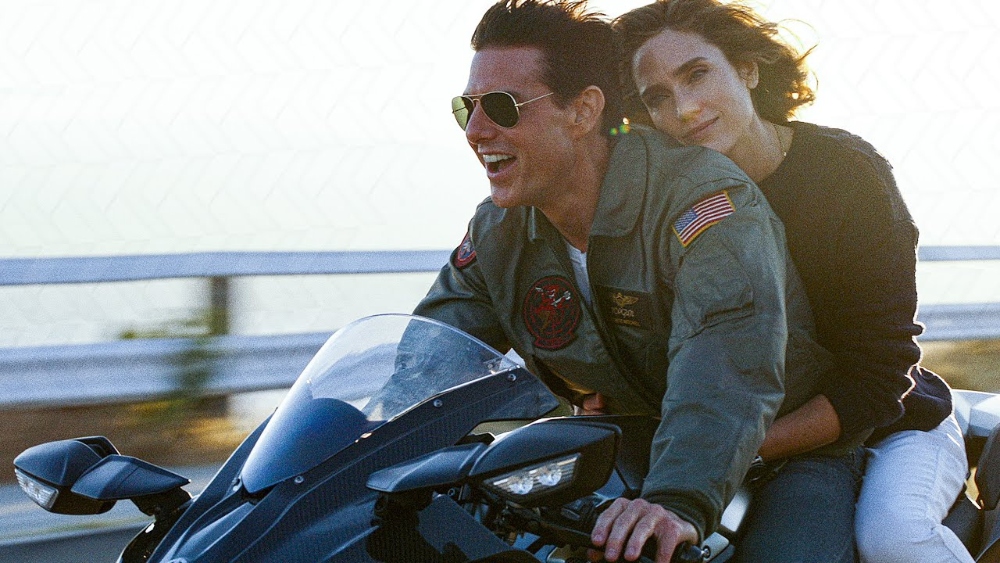
“Maverick,” Tom Cruise’s character’s callsign in the 1986 classic Top Gun and in its long-awaited (and long-delayed) sequel, Top Gun: Maverick, refers to a non-conforming rebel who charts their own path. Yet, as a movie star, Cruise is anything but. Sure, the timeless actor may be one of a kind — maybe even the greatest of modern times — but the overwhelming majority of his work has consisted of crowd-pleasing blockbusters such as the Mission: Impossible franchise. What distinguishes Cruise is not a unique cinematic aesthetic, but his impressive endurance as a box office draw and a driver of conventional film vehicles that nevertheless win the race. So it is that Top Gun: Maverick marks another successful entry in that specific Cruise brand — a movie that is completely unremarkable on many levels, and yet spectacularly entertaining at its core.
The Top Gun story should need no introduction. In 1986, Pete “Maverick” Mitchell was a daring young pilot at the “TOPGUN” Navy Fighter Weapons School in San Diego. Young Maverick isn’t just rebellious, he’s also a reckless showoff eager to impress everyone from his teacher, Charlotte Blackwood (Kelly McGillis), to his rival, Tom “Iceman” Kazansky (Val Kilmer). Taking his stunts one Mach too far, Maverick may or may not be responsible for the death of his Radar Intercept Officer and best friend, Goose Bradshaw (Anthony Edwards). A series of impressive aerial combat sequences and an Oscar-winning soundtrack help Cruise deliver an iconic action movie that is as much a landmark of the ’80s as Ronald Reagan, Madonna, and the Mets winning the World Series.
Produced by Jerry Bruckheimer and powered by a distinctive soundtrack by Harold Faltermeyer, the original Top Gun saw the good guy get the girl, oust the bad guys, and prove his mettle in between. The story was predictable and rather superficial, and yet it was inherently compelling because it was exciting, romantic, and, somehow, relatable. The people behind Top Gun: Maverick — including Bruckheimer, director Joseph Kosinski, and screenwriters Eric Warren Singer, Ehren Kruger, and Chris McQuarrie — seem to have a preternatural understanding of the formula that made the original film so memorable, and they successfully replicate it here.

The high-octane sequel brings us back to Southern California some 35 years later as Maverick is sent back to the TOPGUN Academy to train a new generation of pilots for a dangerous mission. Jennifer Connelly co-stars as Penny Benjamin, Maverick’s new love interest who challenges him in a different way than his superiors, who include Jon Hamm as a base commander who’s unimpressed by Maverick’s shenanigans but will eventually learn to respect them.
Miles Teller plays Rooster, Goose’s descendant who butts heads with Maverick right until the predictable story twist. (As an aside, do these nicknames make Meg Ryan, who played Goose’s wife in the original, a “Chicken” of some sort?) The story is also as predictable and superficial as it was in 1986 — the bad guys whose uranium plant is being targeted by the U.S. government are not named or shown, and the script similarly skims over what has happened in Maverick’s life since the first film (two Gulf Wars, a trip to Bosnia, a relationship, and some unnecessary meddling into Rooster’s career).
At the same time, Top Gun: Maverick is at least as entertaining — if not doubly so — as the original. To create a heart-pounding soundtrack, the producers enlisted Faltermeyer again as well as composers Lorne Balfe (Mission: Impossible – Fallout) and two-time Oscar winner Hans Zimmer, who has built a niche for himself with a series of high-brow action blockbuster scores, as well as Lady Gaga, who composes an end credits song that will likely not become as iconic as Berlin’s tune, but that is nevertheless compelling in its own right. VFX supervisor Ryan Tudhope deserves credit for some impressive aerial sequences, midair shootouts, and well-timed explosions. Cruise has always looked great in uniform, and long-time costume designer Marlene Stewart (True Lies, JFK) dresses everyone up in outfits worthy of both the 1980s and the 2020s, a nice combination of nostalgia with modernity, which describes many elements of Top Gun: Maverick. Cinematographer Claudio Miranda (Life of Pi) shows off with one or two well-shot sunset and sunrise moments, and editor Eddie Hamilton (Mission: Impossible – Rogue Nation) glues it all together to create a tense, exciting, and exhilarating set of flight sequences with the help of the film’s aerial stunt coordinators.

At the end of the day though, most of the credit must go directly to Cruise, whose relentless dedication elevates Top Gun: Maverick to heights it has no business reaching. Like the original, the film opens with Maverick on a show-off stunt that he obviously pulls off, but not before flying you to the very tense edge of your seat, white knuckles and all. Cruise does most of his own stunts and learned to fly for this film, resulting in moments of pure, unedited stress radiating off the screen and into your eyes. Making you gasp with fear is precisely the point, and Cruise and his team achieve that result by continually pushing the envelope, much as Maverick pushes both his fighter plane and his cocky young charges (including Glen Powell‘s Hangman and Jay Ellis‘ Payback). You may know what’s going to happen but it’s all about the journey, like so many old-school movies that concerned themselves with entertaining audiences first and foremost. Top Gun: Maverick fires on all cylinders in that regard thanks to the unparalleled dedication of its star, whose commitment no doubt inspired his younger co-stars as well.
In a scene towards the beginning of Top Gun: Maverick, an aging Colonel played by Ed Harris dismisses Cruise’s high-flying hero by noting that “the future is coming” and that Maverick “is not in it.” He’s referring to technology, which will render pilots obsolete and their talents irrelevant. As a nice bookend, the screenwriters introduce an old plane from the 1980s towards the end of the movie, with a character noting, “Wow, this is old.” No one would dare make ageist jokes about Cruise in the middle of a movie he’s carrying, but the implication that Cruise’s brand is nearing extinction is clear — as it typically is in legacy sequels where nostalgia is at the center of the proceedings.
Cruise would likely not disagree with these arguments. Movies, at least the old-school blockbuster that he perfected and which propelled him to stratospheric stardom, are becoming obsolete. Robots, visual effects, and CGI now do most of the heavy lifting as machines take over the filmmaking process. But true movie magic remains a decidedly human feat, as there’s no substitution for a true movie star. Tom Cruise may be nearing his last hurrah but his decision not to go quietly into that fair night should be welcome by all those old-school movie lovers who aren’t ready to see him grounded just yet, as some wings refuse to be clipped.
Grade: B
Top Gun: Maverick hits theaters on May 26, courtesy of Paramount Pictures.





